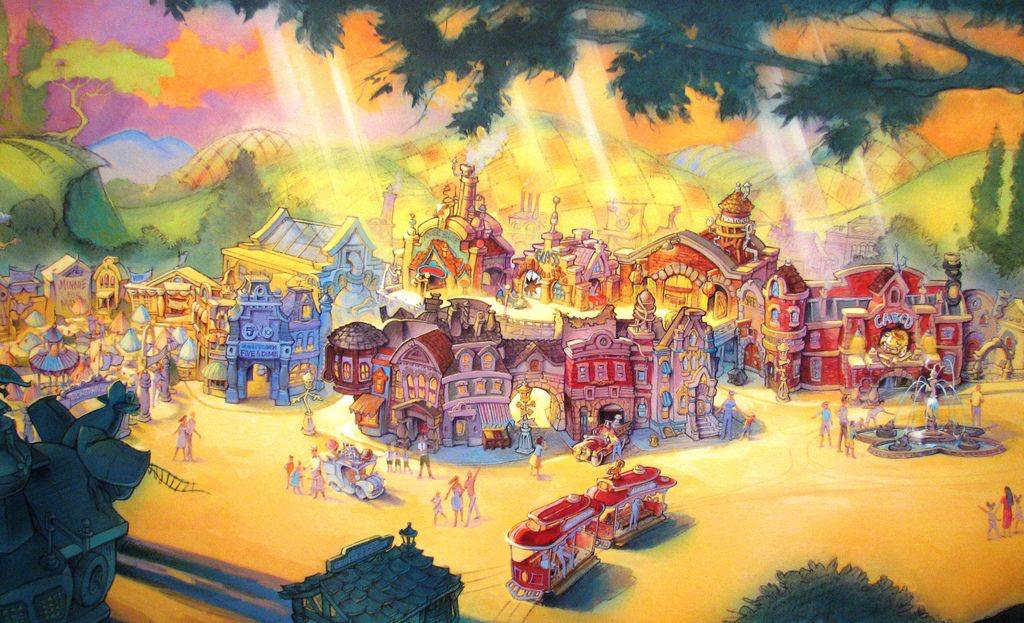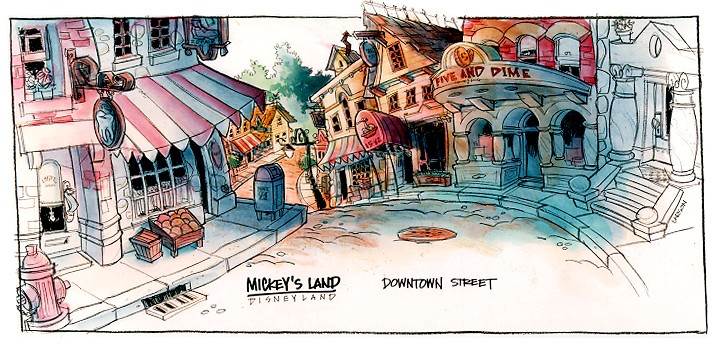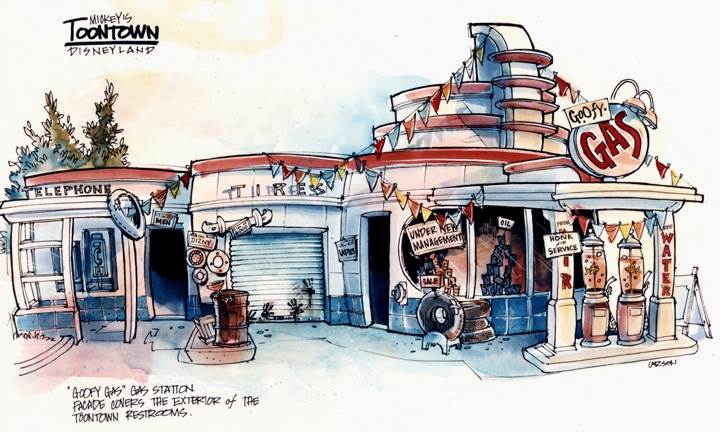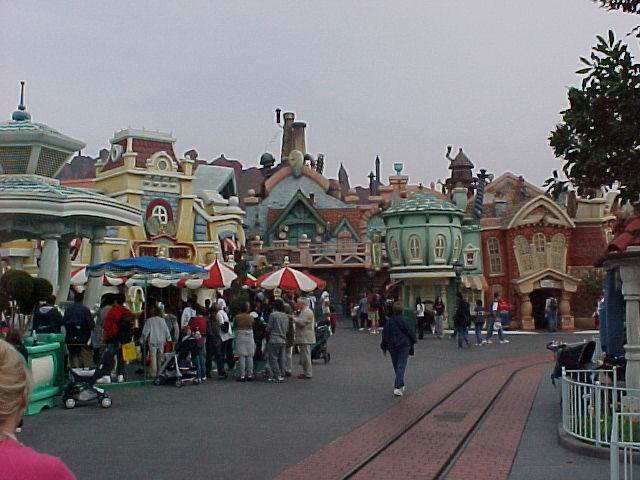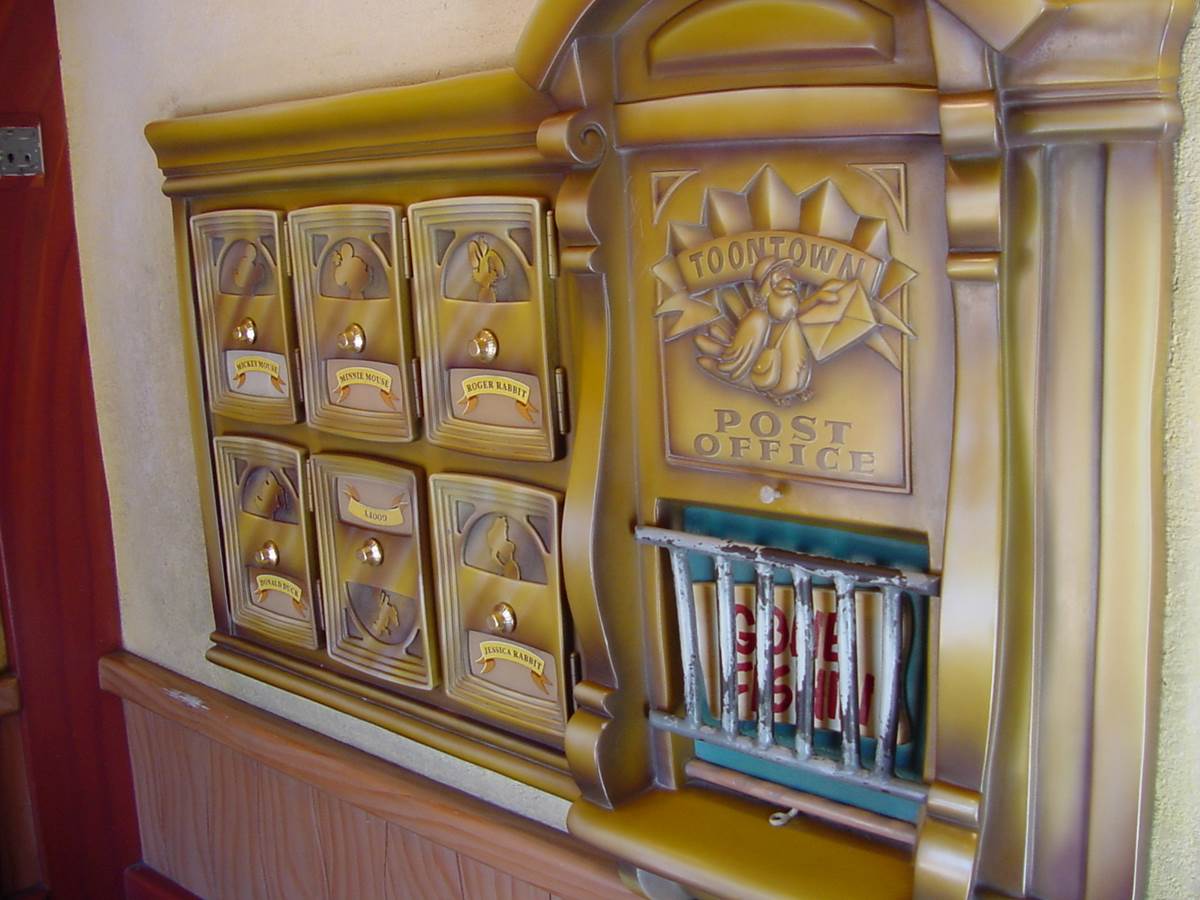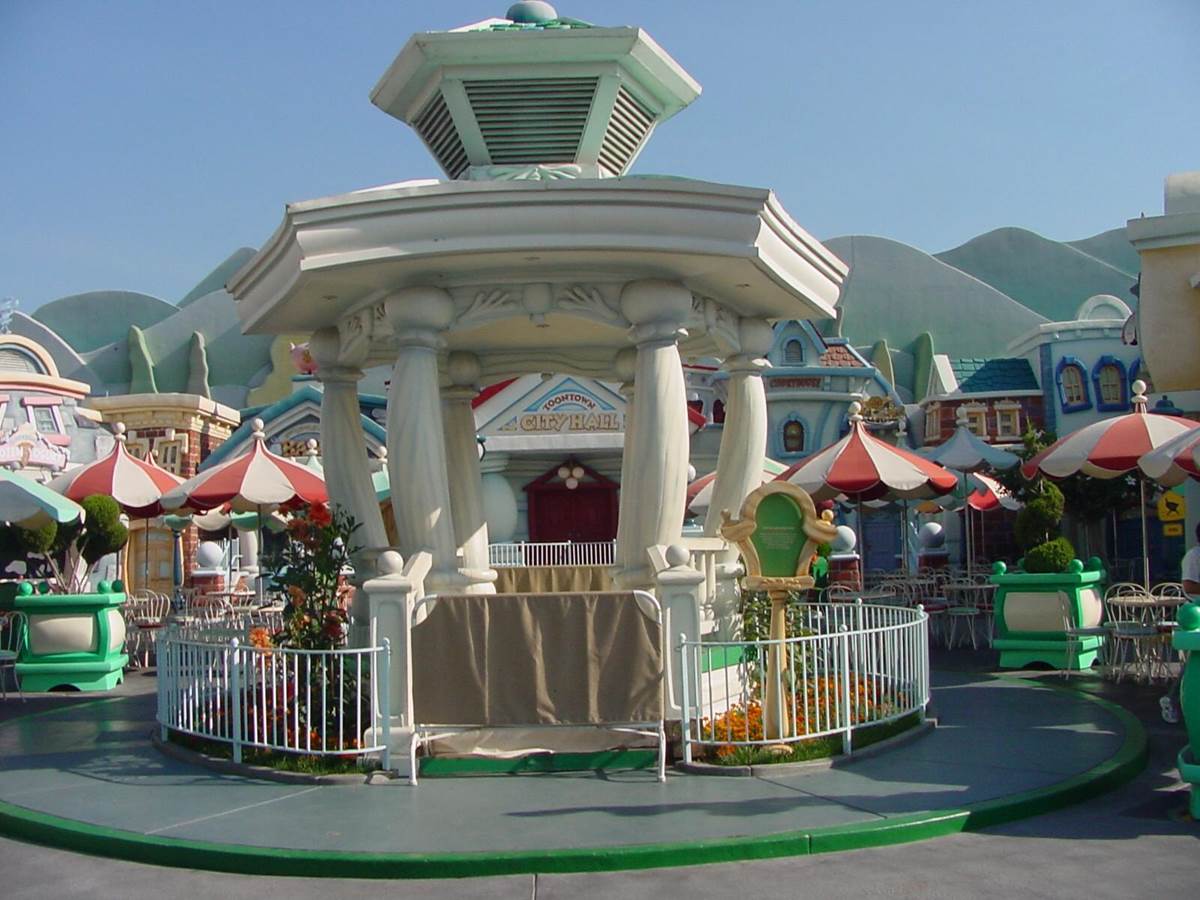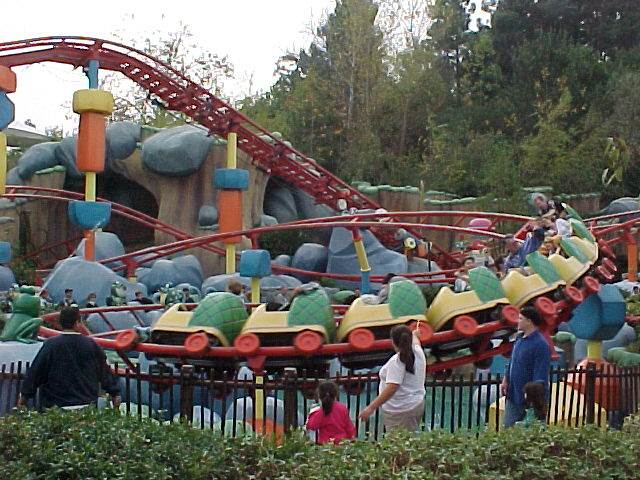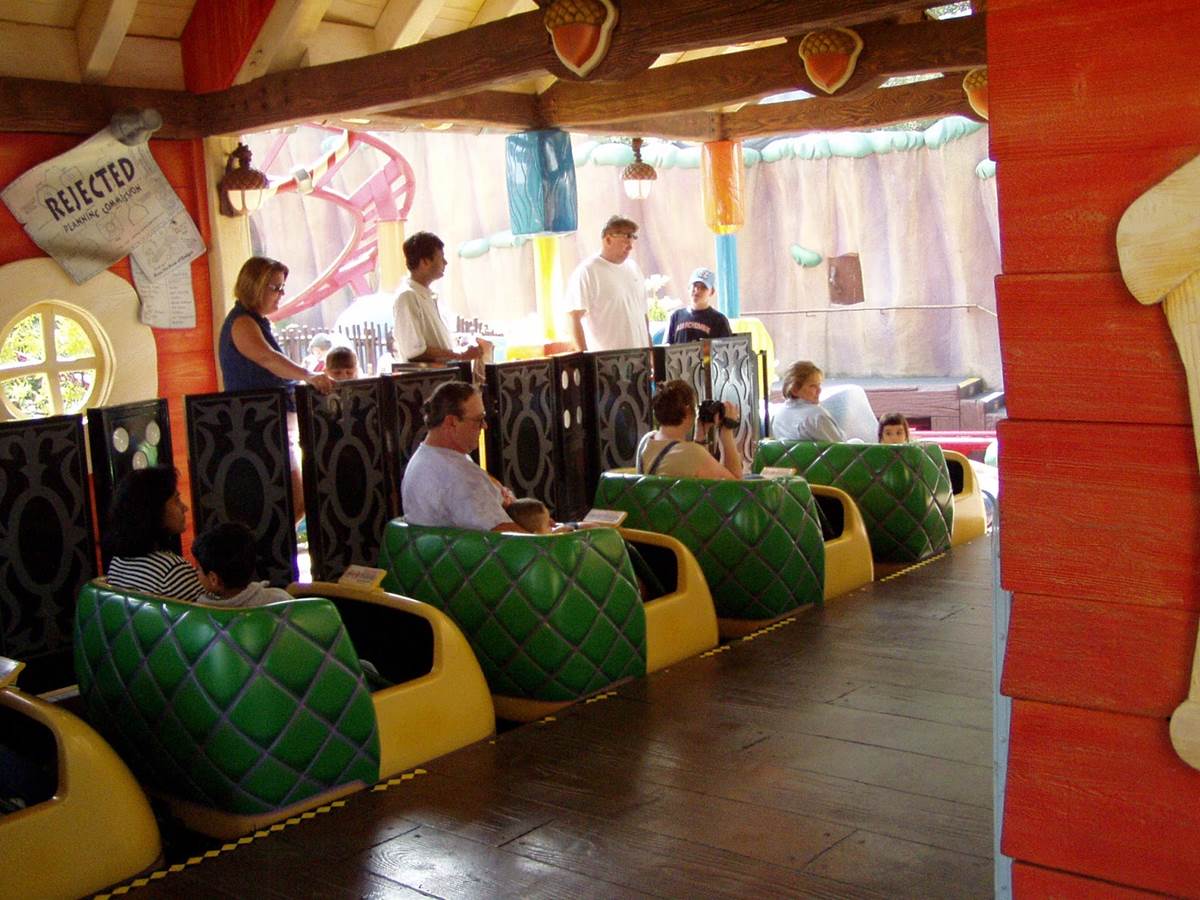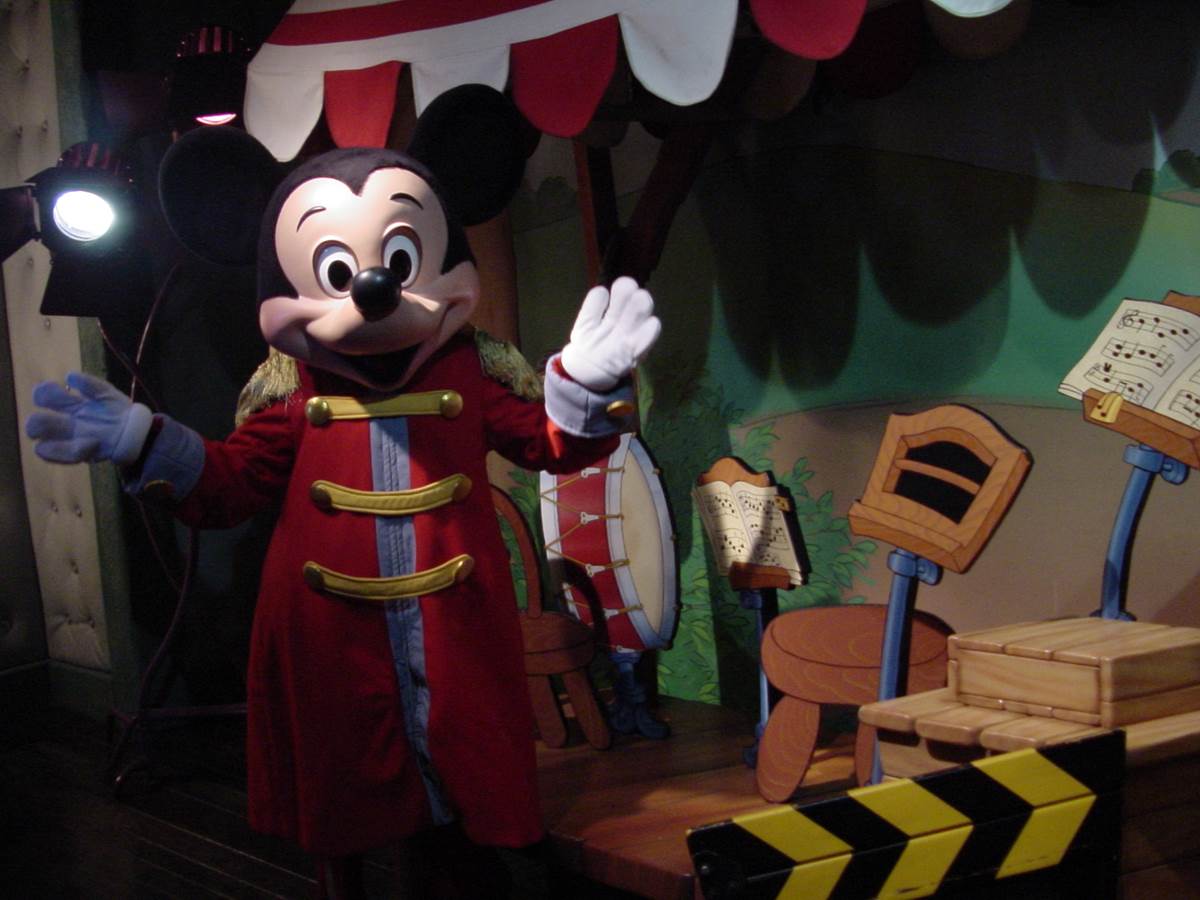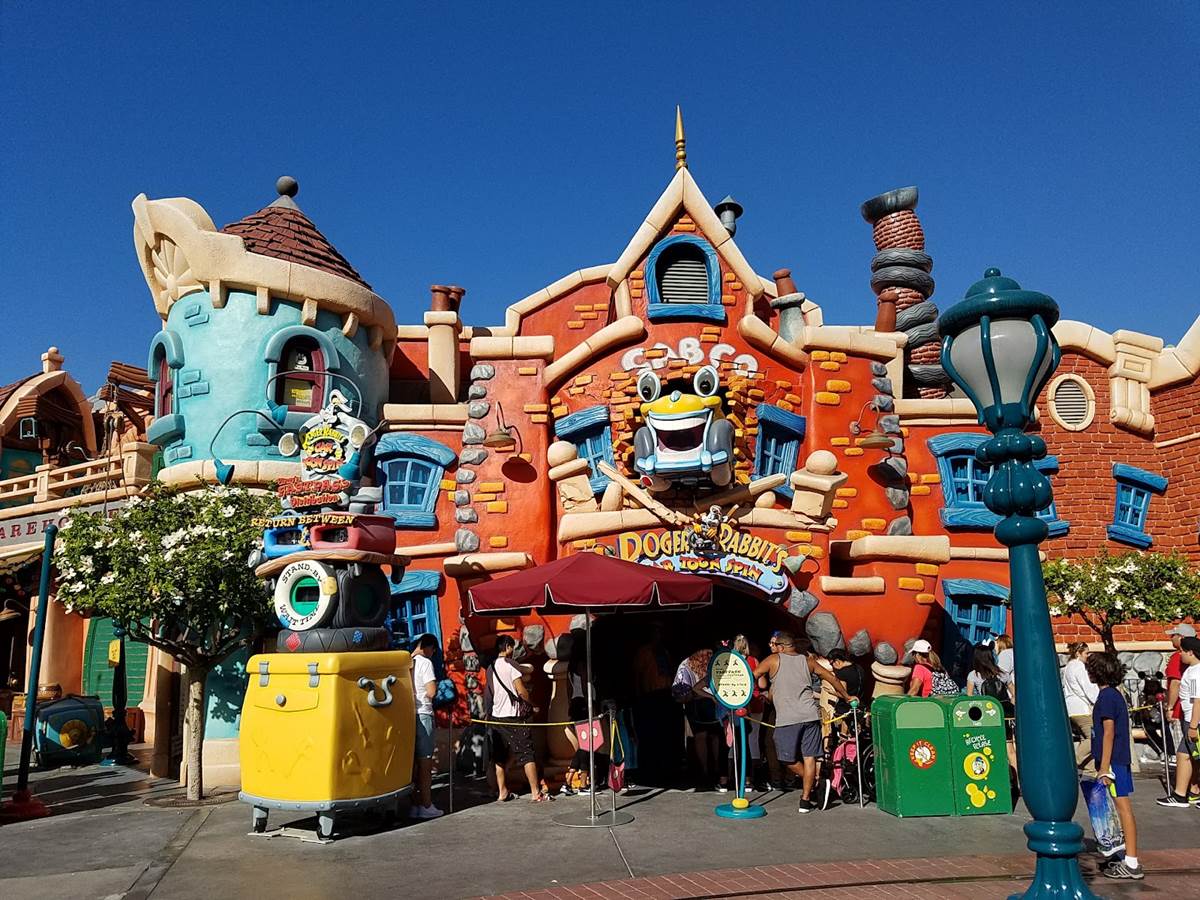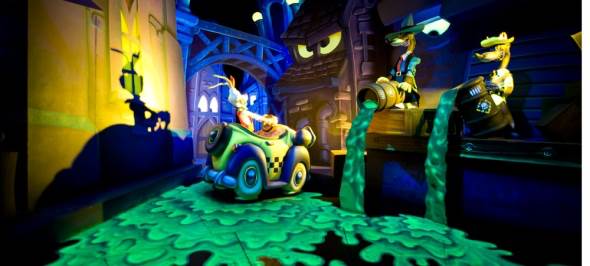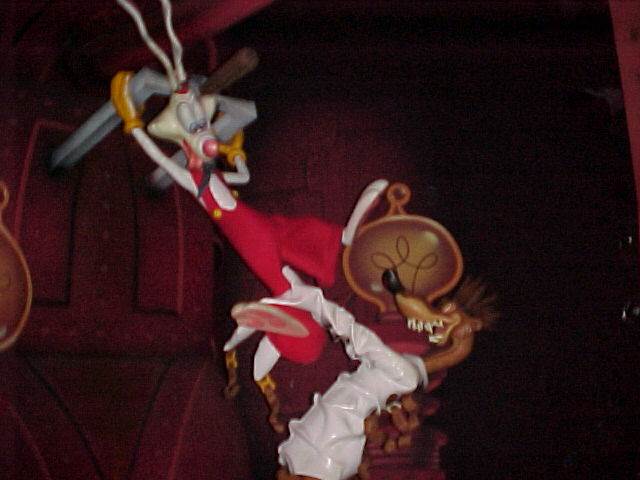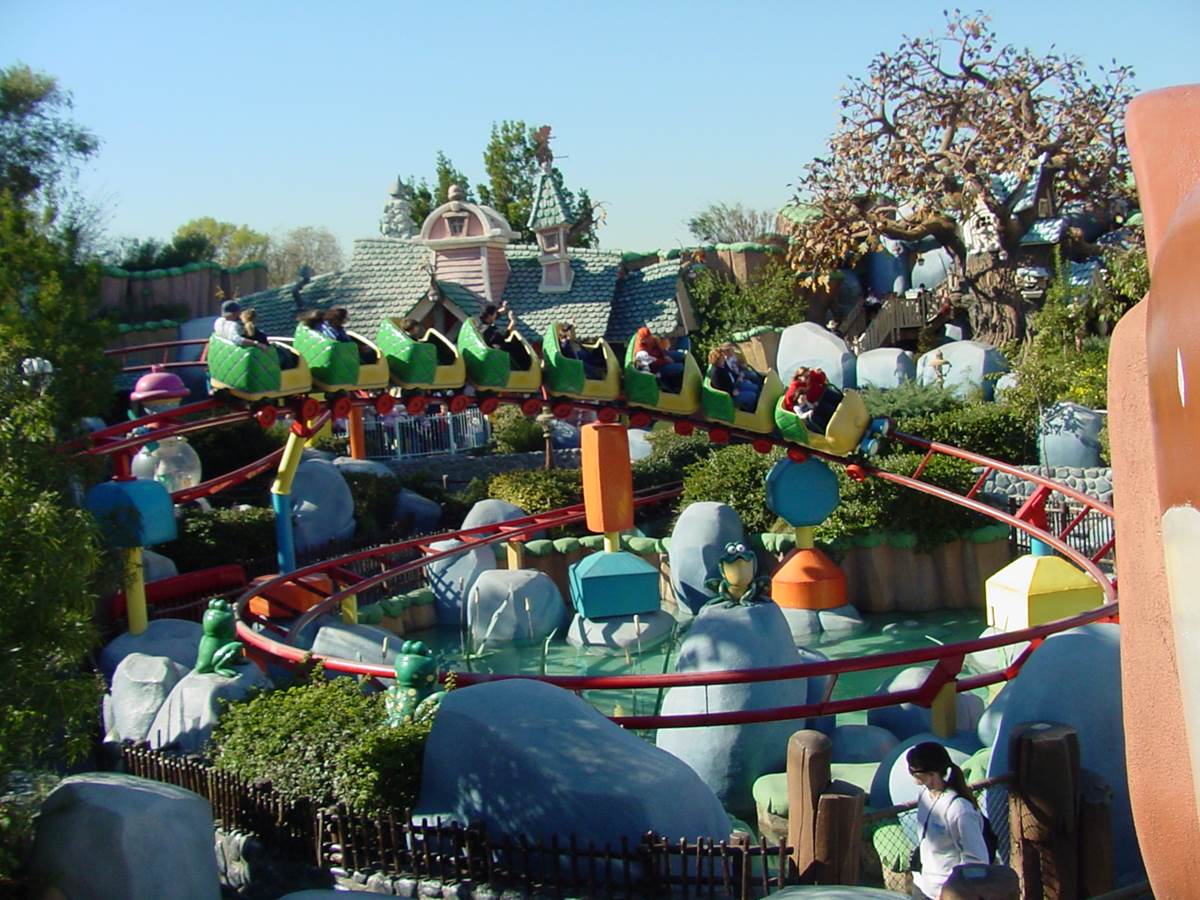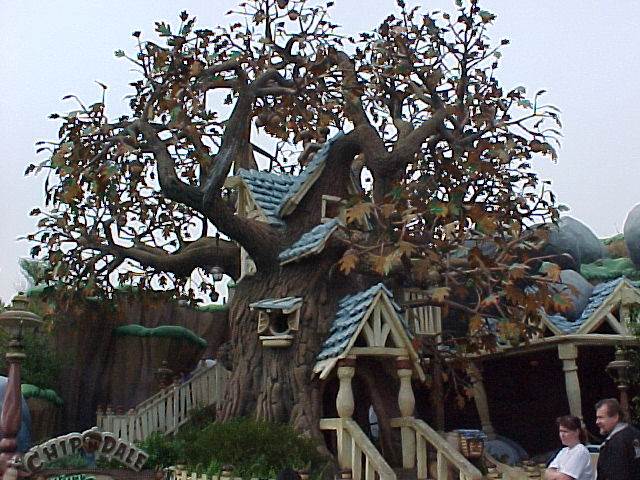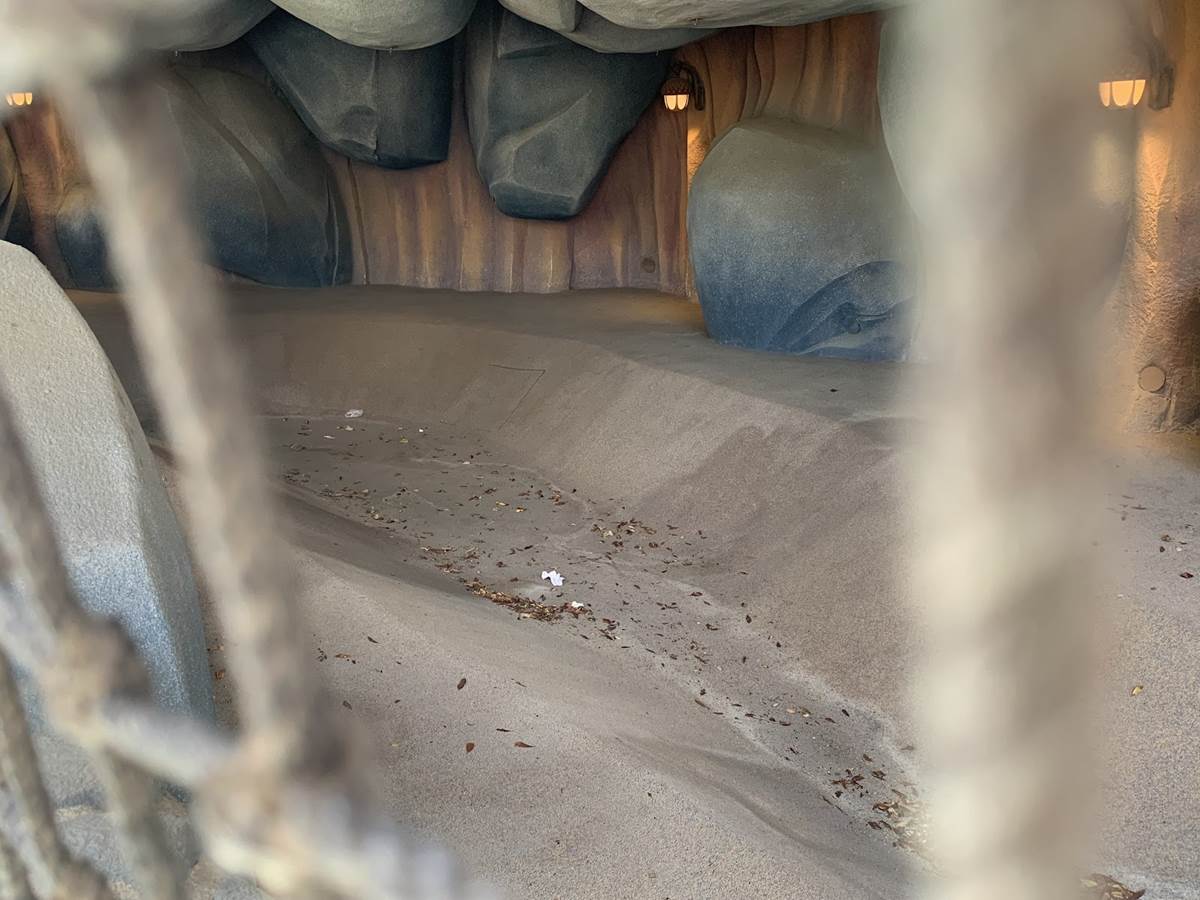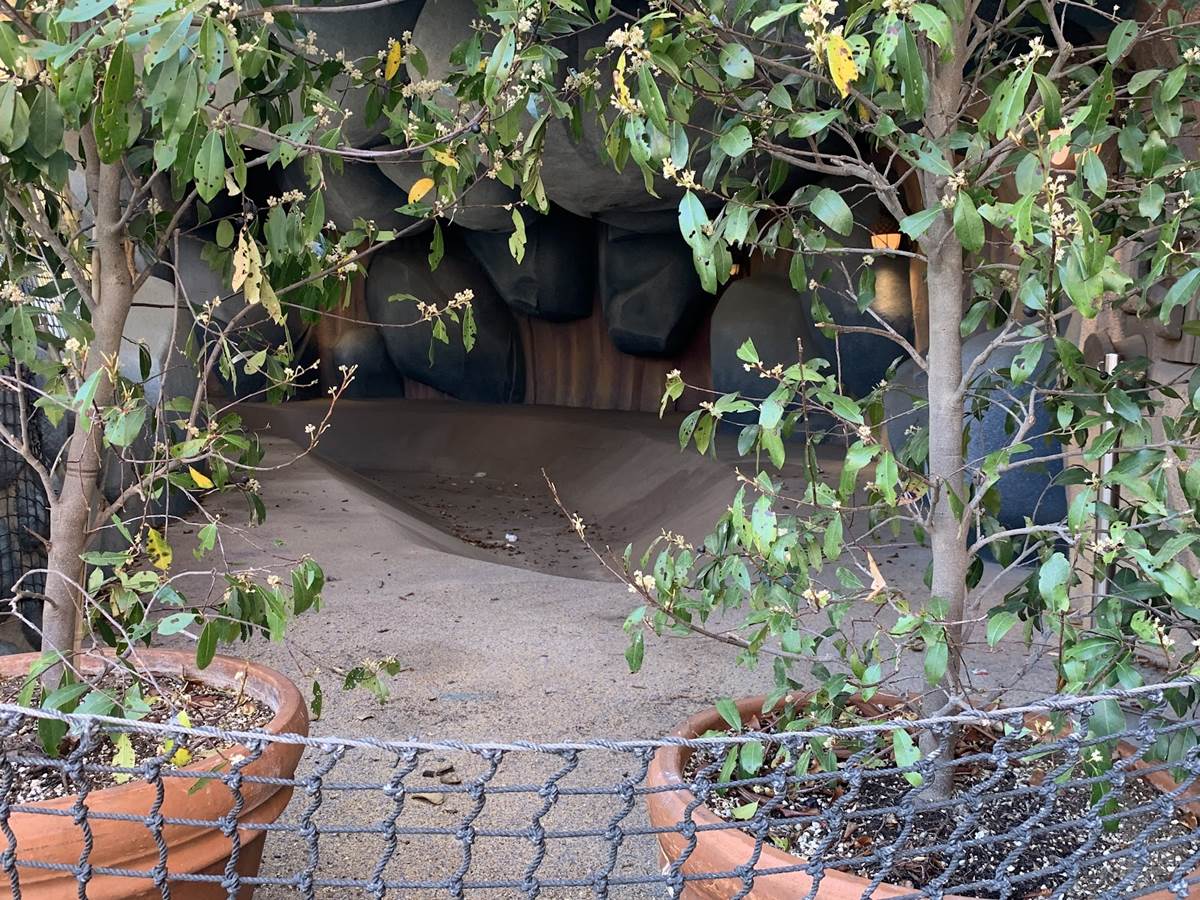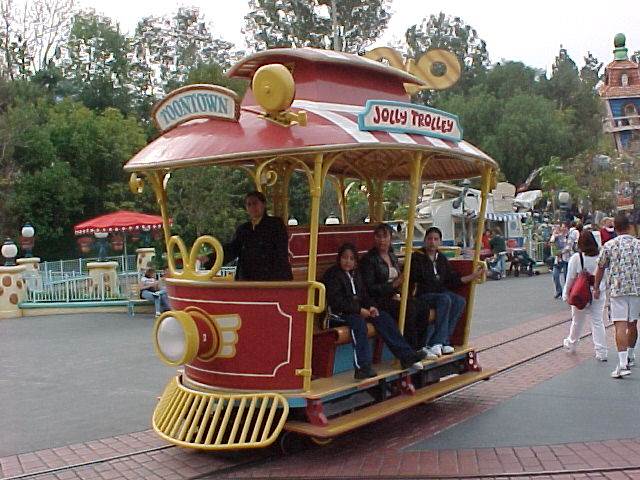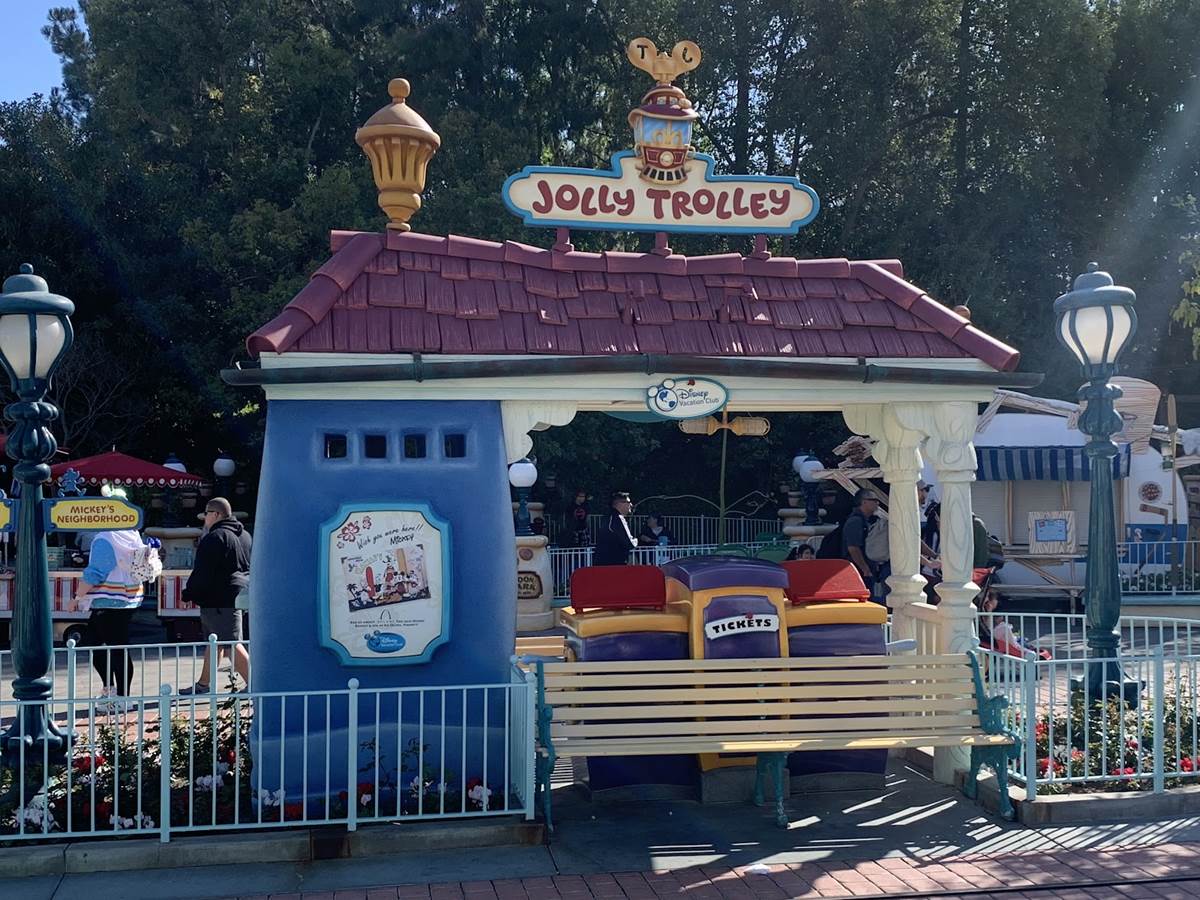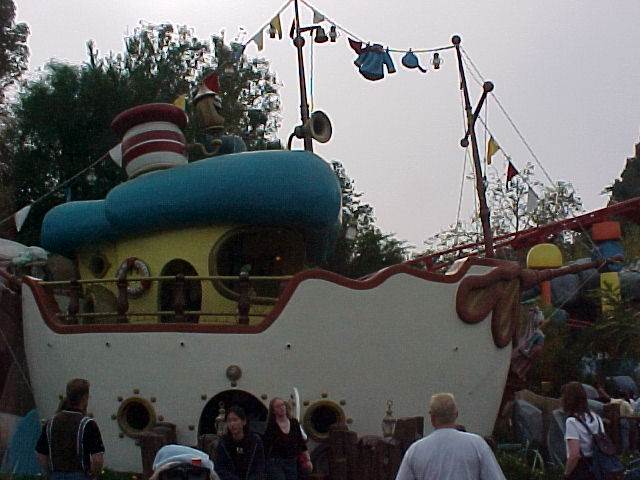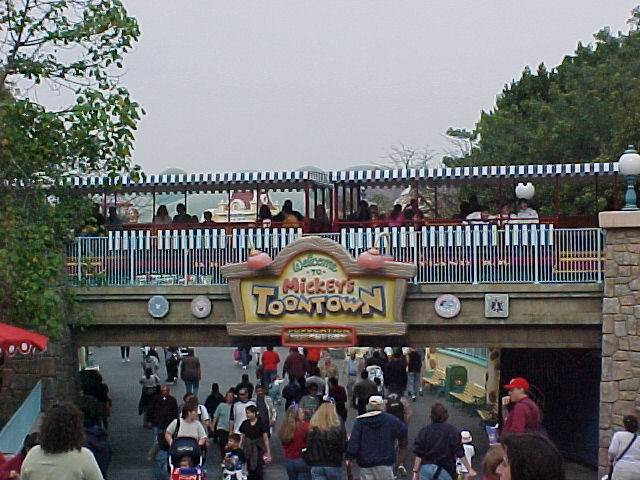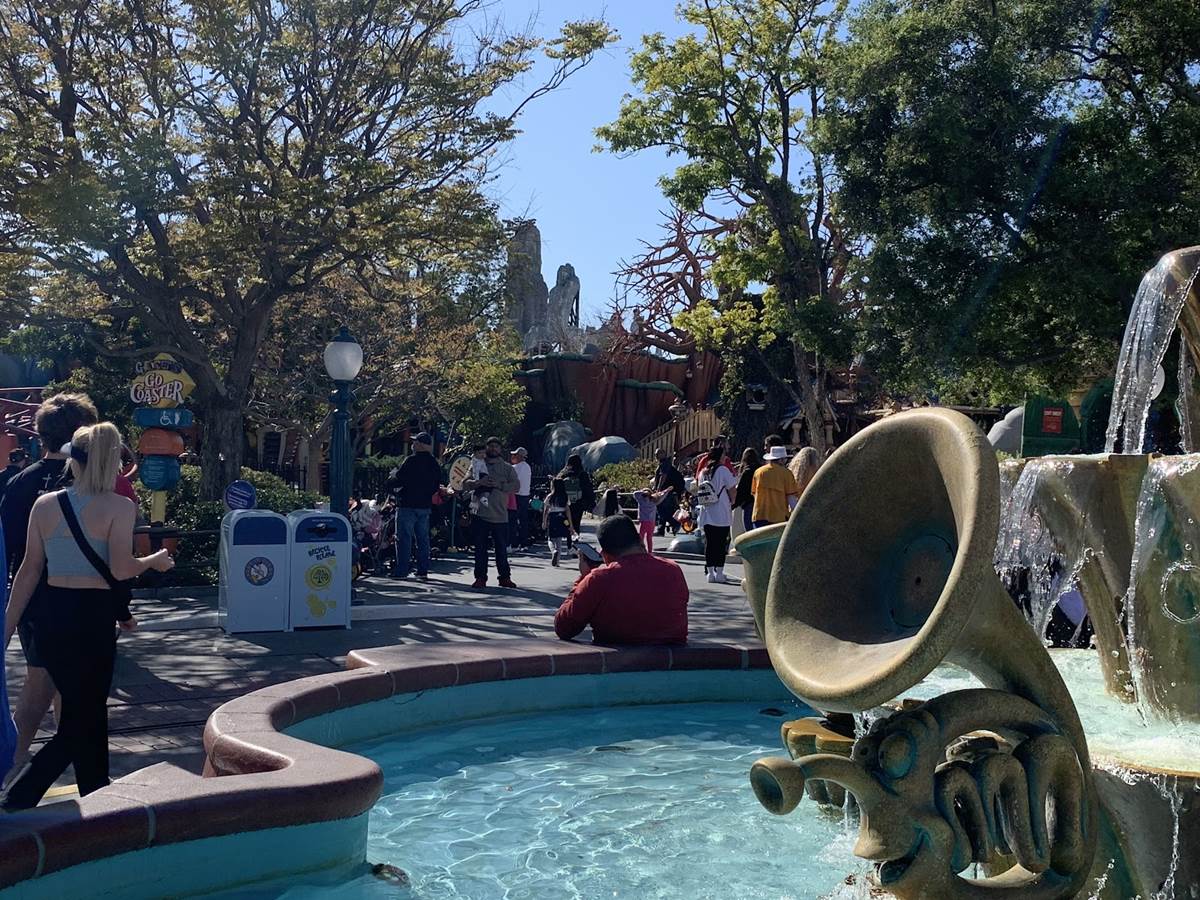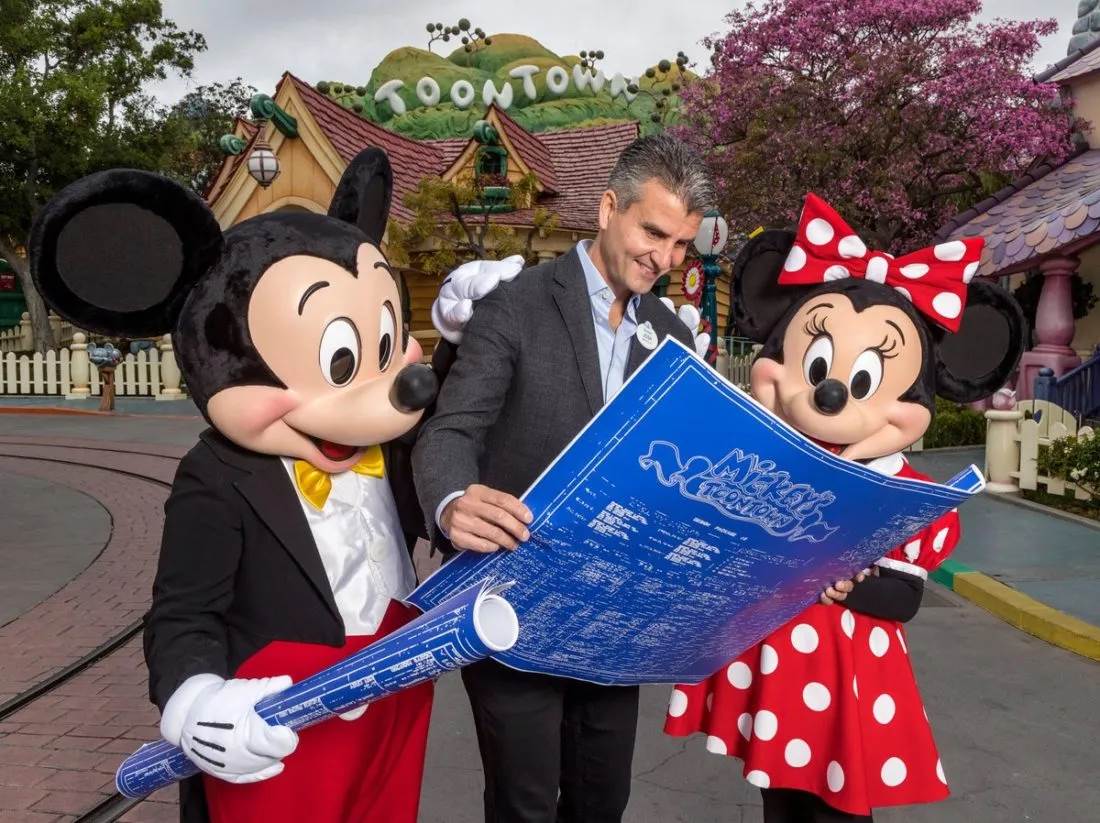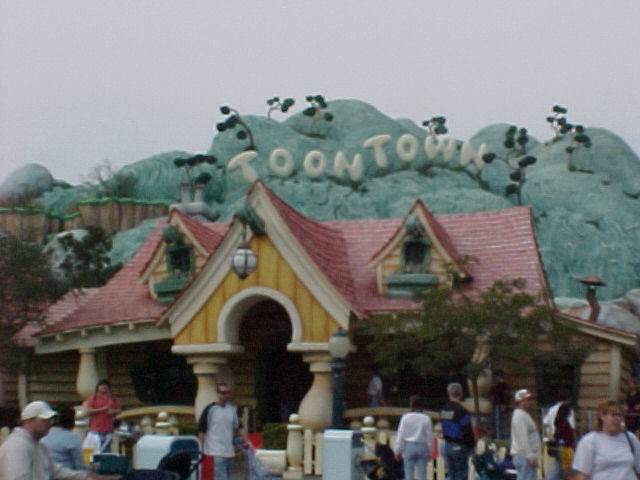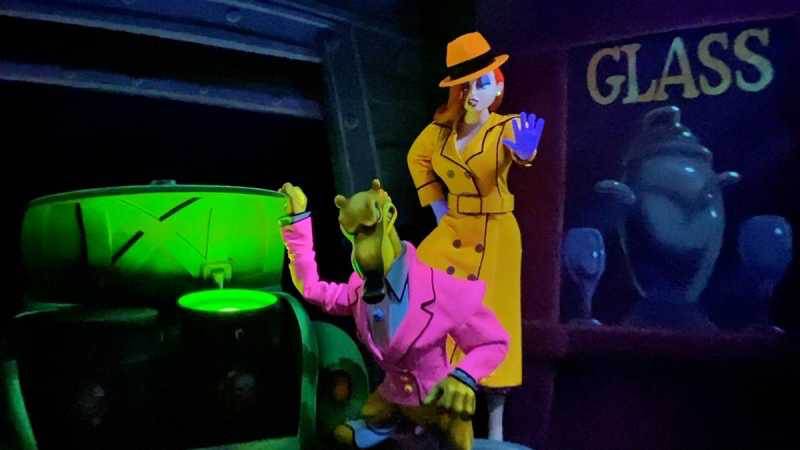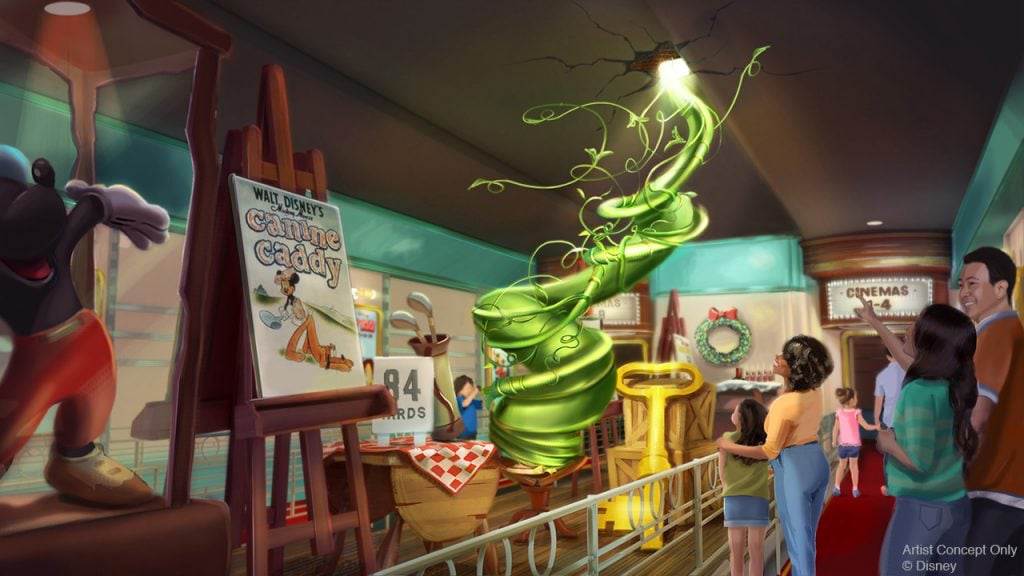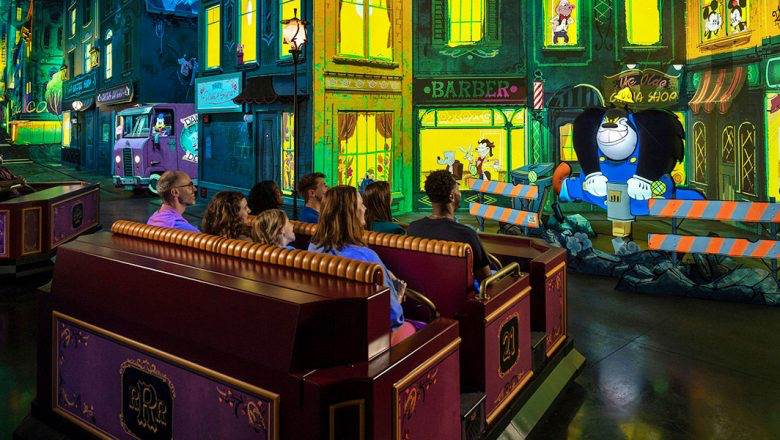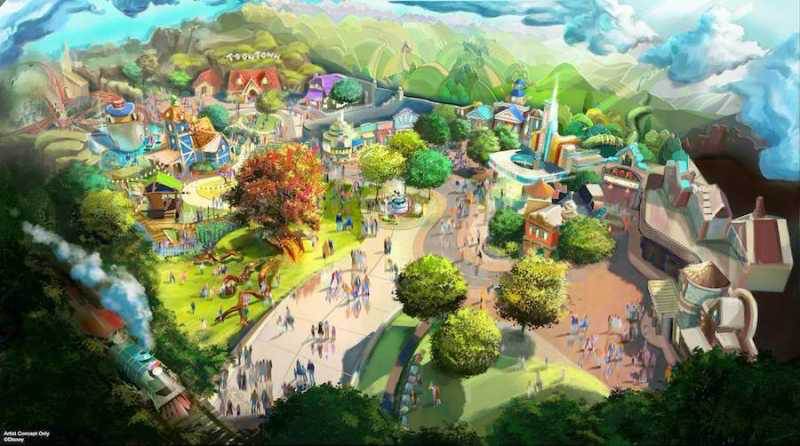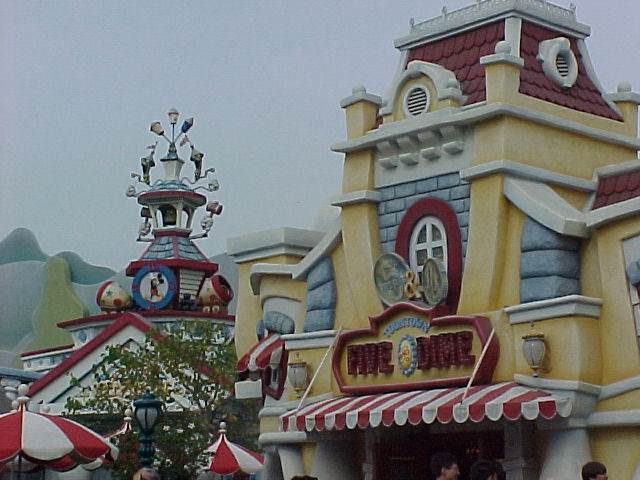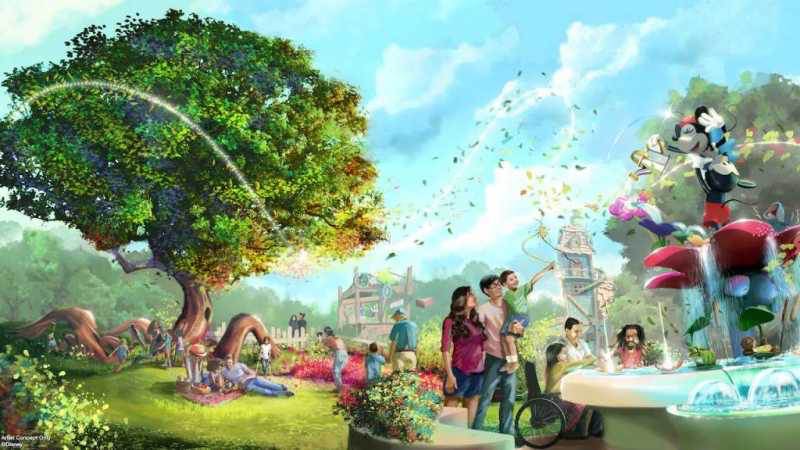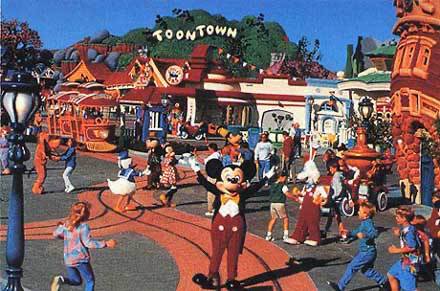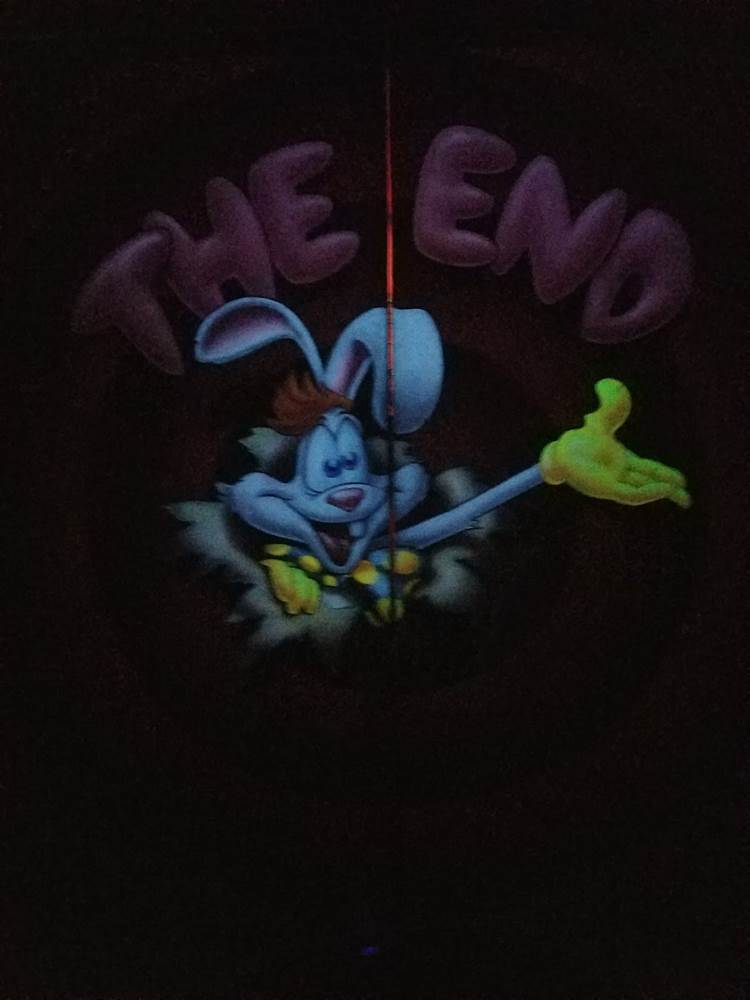Mickey’s Toontown: Almost 30 Years of Animated Immersion
Back in 1993, Disneyland’s newest land was revealed. Revealed because it had been there for years before. It was Mickey Mouse who suggested to Walt Disney himself where to put his new amusement park venture that would be known as Disneyland. At least, that’s how the mythology behind Mickey’s Toontown goes. A town where all the cartoon characters we know and love live (a la 1988’s Who Framed Roger Rabbit) would be revealed to park guests just outside the berm of Disneyland in January of 1993. Now, at almost thirty years of age, the smallest land in Disneyland is about to get a radical renovation (closed beginning March 9th, 2022) and today we’re going to take a closer look at that land that toons built.
While the Disney-created lore and mythology suggests that Mickey’s Toontown has always been there, realistically we know that wasn’t the case. In fact, it was once home to backstage locations, including the park’s housing area for ponies. Across the country, Disneyland’s East-Coast sister, Walt Disney World, had a surprisingly successful new area that was built to respond to one of their key guest requests: a designated area to meet Mickey Mouse. That area, Mickey’s Birthdayland, was designed as a temporary celebration of Mickey’s 60th birthday in 1988. The area proved so popular that not only was it kept (and renamed as Mickey’s Starland) but plans were soon worked on for some kind of Disneyland equivalent. Fuel was added to the fire when a special event took over the “it’s a small world” mall area at the park for a season and proved wildly successful, Disney Afternoon Avenue.
Originally called “Mickeyland” or “Mickey’s Land” depending on the phase, the huge success of Who Framed Roger Rabbit in 1988 also had plans revamped for the new Disneyland land. Borrowing ideas from a Hollywoodland concept once cooked up for behind Main Street USA and the meet and greet idea of Mickey’s Starland, the land eventually became Mickey’s Toontown, and was divided into two halves.
It’s hard to imagine that such a small land, at less than three acres in size, can have two separate districts, but Mickey’s Toontown pulled it off brilliantly. As guests enter Mickey’s Toontown, they go beneath the train tracks of the Disneyland Railroad and immediately are transported into the cartoon world of Mickey’s Toontown, but are closer to the first half of the land, Downtown Toontown. At opening, Downtown Toontown was home to the barn for the Jolly Trolley, the Toontown Cab Co. (which promised the opening of a new attraction in the near future), the retail locations, the dining locations of the land, and many, many hands-on interactive areas. The City Hall of the land is not for complaining and making reservations, but rather announcing the arrival of our favorite animated friend who are ready to take a stroll through Toontown meeting their human fans. Just past Goofy’s Gas you enter the other half of Mickey’s Toontown, called Mickey’s Neighborhood. Here is where all the Meet and Greet locations can be found, most in the residences of our favorite characters. Mickey Mouse, Minnie Mouse, Donald Duck, Goofy, Chip and Dale, and Gadget (from Chip ‘N’ Dale Rescue Rangers). Gadget’s house is also home to what is the first roller coaster for many-a-kid, Gadget’s Go-Coaster. The Jolly Trolley would run the length of the land, running from Downtown Toontown to Mickey’s Neighborhood with stops in between.
Mickey’s Toontown opened on January 24th, 1993, welcoming guests to the land that toons built and was a smashing success. When it opened, guests could experience:
- Jolly Trolley
- Goofy’s Bounce House
- Mickey’s House (Meet Mickey at Mickey’s Movie Barn)
- Minnie’s House (Meet Minnie)
- Donald’s Boat
- Gadget’s Go Coaster
- Chip and Dale’s Treehouse and Acorn Crawl
- Toon Park
- Toontown Five & Dime (Retail location)
- The Gag Factory (Retail Location)
- Pluto’s Dog House (Dining Location)
- Clarabelle’s Frozen Yogurt (Dining Location)
- Daisy’s Diner (Dining Location)
Aside from the bevy of things to do and see across the small acreage of this corner of Disneyland, the land was touted for its incredibly immersive design, many arguing that it marked a new era in the art of Theme Park design. Once guests pass under the train tracks, they are transported into a world of cartoons, with buildings designed in wonky, cartoony ways. Animated sounds like foghorns and tuba noises all fill the air, and even the area music is designed to be like the background music in a cartoon. Anywhere the real world could be seen was covered by a painted flat to look like animated hills on the horizon, or a distant part of a downtown animated skyline depending where in the land you were. Even in Disneyland, you felt like you were somewhere else entirely.
Part of the draw was also the ability to touch and play with almost anything in the land and have it respond. Sometimes, with very loud and overstimulating results. Whether it be a manhole cover, a dynamite plunger, or even a doorknob at the powerhouse, everything was interactive. Mailboxes for Toontown residents would come to life at the post office, with guests being able to hear the voices of the characters to whom they belonged.
Most of Mickey’s Toontown also got branded unofficially as the kids area, due to the offerings in Mickey’s Neighborhood.
Toon Park, near Goofy’s Bounce House, is a relaxing area pulled aside from the hustle and bustle of the rest of the land, perfect for smaller kids. Goofy’s Bounce House was exactly what it sounds like, a bouncy house, but highly themed in a way only Disney could do. Chip and Dale’s Acorn Crawl was a slide from the treehouse into a ball pit (where the balls looked like acorns), and Donald’s Boat was another glorified and themed play area with slides and hands-on activities. Some of these locations even had a MAXIMUM height, adding to the reputation of Mickey’s Toontown being just for kids.
Gadget’s Go-Coaster was billed as a family coaster ride, though it skews more for the kids. Since then, this particular type and model of coaster have appeared (sans Rescue Rangers theming) in numerous parks in their respective “kids area” around the country.
Especially after the temporary experiment that took place at Disneyland shortly before the announcement and opening of Mickey’s Toontown, Disney Afternoon Avenue, it was clear that the characters themselves would be the big draw of the area and that they were. Mickey’s House and Minnie’s House were some of the biggest draws, not just in the land, but in the park. Guests would find themselves waiting to walk through Mickey’s House or Minnie’s House and play in their living rooms, in their kitchens. Similar to Downtown Toontown, everything in the homes was touchable and interactive. But the walk-throughs also served as queues, occupying guests while they waited to meet the characters. Minnie would be found in her backyard tea garden, but Mickey’s greeting location is far more elaborate. Located in his backyard movie barn, guests would navigate through his home and backyard, and eventually into the movie barn screening room, where Goofy and Donald are manning the projector and showing off old Mickey Mouse shorts. Movie Critic Leonard Maltin once even singled out this particular pre show, saying it was as good as anything the studio puts out theatrically. He even commented on the authenticity of a frame burning in the projection gate, saying it fooled him as he had lived through that first hand numerous times before.
Once guests get to the actual meeting area, they can visit Mickey “on set” of his most classic features, including Thru The Mirror, Steamboat Willie, The Sorcerer’s Apprentice, and The Band Concert, but more notably, Mickey’s appearances and greetings were in the corresponding costume. While he might be wearing his classic tux out on Main Street, here you could find him in rare outfits that made these particular meet and greets special for park fans.
Although it was ready to be opened with the land in 1993, it wasn’t until 1994 that the wall at the Toontown Cab Co., where Lenny the Cab had been slowly rocking above for about a year now, had come down and Roger Rabbit’s Car Toon Spin would open to guests.
While Roger Rabbit would be present in the parks since the film came out, (and many canceled attractions and lands were planned to feature him) this was his very first attraction. Keeping the spirit of the film, the attraction is a madcap dark ride, similar to what can be found in neighboring Fantasyland, but more frantic, more kinetic, and a whole new….spin. Guests take the wheels of Benny’s cousin, Lenny the Cab, and are able to spin themselves silly as they twist and turn through the back alleys of Toontown while evading the Weasels and their Dip.
Imagineer Joe Lanzisero once explained that they took a teacup from the park’s Mad Tea Party attraction and placed it on Pinocchio’s Daring Journey and took a spin on the attraction that way, and it was “a marriage made in Disneyland.” However, one thing that they learned was that suddenly guests would be able to see things that they weren’t meant to see. IE Lighting rigs, the backsides of a facade, etc. So when developing Roger Rabbit’s Car Toon Spin, they had to think literally from all angles. The vehicle is at the control of the guests, so they can turn and see things at their leisure, though more often than not, they’d be spinning so quickly it would flash by in the blink of an eye. This means that Roger Rabbit’s Cartoon Spin is an almost fully realized environment, with the capability for guests to see new and different things each time they ride. And waiting in line to experience the attraction isn’t that much of a chore either since it marked one of the first (if not the first) fully immersive queue in the industry, taking guests through Toontown environments and alleys, past the Ink and Paint Club, and seeing animatronic versions of Baby Herman, the weasels, and others from Who Framed Roger Rabbit, all setting up the story for the adventure the guests are about to set on.
Mickey’s Toontown proved so popular, it was also replicated at Tokyo Disneyland (complete with their own Roger Rabbit’s Car Toon Spin) in 1996, and in a weird twist of fate, Mickey’s Starland at Walt Disney World’s Magic Kingdom became Mickey’s Toontown Fair in time for the park’s 25th anniversary celebration. Decidedly less immersive than it’s California counterpart, Mickey’s Toontown Fair also saw the addition of Goofy’s Barnstormer (similar to Gadget’s Go-Coaster) and the “country homes” of the characters, since their permanent residences were already in the California park.
After the opening of Roger Rabbit’s Car Toon Spin in 1994, Mickey’s Toontown remained relatively unchanged….in terms of additions. The land changed, arguably drastically, over the coming decades as attractions in the land were changed or removed entirely.
The first removal? The acorn crawl ball pit at Chip ‘N’ Dale’s Treehouse in 1998. Embarrassingly, the empty pit can still be seen at the park just beside the treehouse in 2022.
The treehouse is still open, but now it's more or less a flight of stairs with elaborate Chip and Dale theming.
Goofy’s Bounce House was decreasingly bouncy as time went on, eventually becoming just Goofy’s PlayHouse in 2008, with a spongy yard and interactive play elements outside of his home, with the actual house serving as a walk through attraction.
The Jolly Trolley, which saw large crowds that wanted to take a ride on the rocking, wobbly transport the 500 feet from Downtown Toontown to Mickey’s Neighborhood (with stops along the way!), was removed in 2003. The combination of a large vehicle in a congested area, the lack of restraints on the trolley, and guest satisfaction ratings of waiting an hour to travel a few feet all likely caused the attraction to be closed. Now, a trolley stands stagnant near the Toontown Gazebo and serves as a photo spot and Disney Vacation Club information desk.
While Donald’s Boat still sits next to Goofy’s house and Gadget’s Go Coaster, many of the interactive play elements and slides have also been removed, now serving as a highly themed play structure where guests can toot the horn of the boat.
After those changes, Mickey’s Toontown stood relatively stagnant for over a decade with no major changes outside of regular maintenance and refurbishments. In fact, that was the main cause of concern and why many Disneyland fans had always assumed the area had a bullseye on it for removal. It’s location behind “it’s a small world” and adjacent to the Fantasyland Theater makes it easy for absorption into Fantasyland or something new entirely.
By 2019, a new threat was in play, with Star Wars: Galaxy’s Edge creeping over Mickey’s Toontown, clearly visible from Chip and Dale’s Treehouse and Gadget’s Go-Coaster.
Seeing the rock formations of the new land over the land that toons built had many fans speculating that if the inverse were the case (seeing Toontown from SW:GE) solutions would have been found immediately to stop the visual intrusion, whereas nobody seemed to care about Toontown with such high regard.
In 2019, all eyes were on Mickey’s Toontown when then-Disneyland President Josh D’Amaro took to Instagram and revealed a new attraction was on the horizon for the seemingly forgotten corner of Disneyland, but the global pandemic and park closure in 2020 was another hit for Mickey’s Toontown. Not only was the park closed and the new attraction delayed because of it, the highly contagious nature of the COVID-19 disease in a three-acre area designed to be touched and interacted with did not bode well. When the park had reopened, most of Downtown Toontown had been closed off, as had the character’s houses with their interactive appliances and features, and more importantly, characters were not available for meet and greet, and that was this area’s bread and butter. Characters inevitably did appear on the porches of their home, waving to guests from afar. The park even tried a new experiment to generate revenue with the basically shuddered attraction, turning Mickey’s House into a bookable party experience where kids and adults can celebrate in his home with a private appearance from the famous Mouse.
At numerous Disney Parks around the country, some attractions were being changed in subtle ways to be more culturally sensitive. Roger Rabbit’s Car Toon Spin was one of the attractions that was changed with little fanfare, and in December of 2021, the attraction had turned Jessica Rabbit into a private eye heroine, stopping Toontown’s Weasel crime wave, instead of being the damsel-in-distress that was shown in the attraction being thrown into the trunk of a car.
In April of 2019, Disneyland announced that Mickey and Minnie’s Runaway Railway, an attraction that was then under construction and set to open at Disney’s Hollywood Studios at Walt Disney World, would be coming to Mickey’s Toontown at the Disneyland Resort. Concept art was released, and we can see that for the first time since opening, the skyline of Mickey’s Toontown would be changed with the addition of the El CapiTOON theater, which would set the stage for the new attraction.
However, that was not the only news regarding Mickey’s Toontown that Disneyland had up their sleeve. They also announced in late 2021 that Mickey’s Toontown would also be set to be “reimagined” ahead of the opening of the new attraction. Much was up in the air and fans of Mickey’s Toontown were concerned as to what this reimagining would entail, especially given the vague nature of the announcement and certain things missing from the concept art that was released.
What we knew for sure at the time was the addition of an open expanse and green space taking over Toon Park, becoming CenTOONial park, with a new fountain featuring Mickey and Minnie Mouse. Closer examination revealed that the remnants of the Jolly Trolley would likely be removed and the main street connecting Downtown Toontown and Mickey’s Neighborhood would be pushed toward City Hall to allow for more green space. And based on the art, the El CapiTOON theater would be taking the location of the former Five and Dime retail space.
Current WDI President Barbara Bouza has a background in holistic design for wellbeing, one of the reasons she was picked to come to WDI. She told InPark Magazine that “Within the parks, Imagineers are exploring ways to allow guests to decompress or experience a less stimulating environment, while maintaining Disney quality and storytelling in the space.” The changes to Mickey’s Toontown seem to be just the beginning of that initiative…which is a far cry from the “touch everything” approach to the area back in ‘93.
In February of 2022, it was announced that Mickey’s Toontown would be closed beginning March 9th, 2022 to get the radical renovation under way. What we learned at that time was that Roger Rabbit’s Car Toon Spin would still be a part of Mickey’s Toontown but Gadget’s Go-Coaster, Donald’s Boat, and Goofy’s House will be “reimagined in new and exciting ways.” The reimagined Mickey’s Toontown is set to open alongside Mickey and Minnie’s Runaway Railway sometime in 2023, which Disneyland President Ken Potrock has said will have more enhancements that are not in the current version of the attraction at Disney’s Hollywood Studios. The 2023 date also marks the 30th anniversary of Mickey’s Toontown at Disneyland.
While many thought Mickey’s Toontown should have been demolished years ago, perhaps for more current and relevant IP, others are welcoming the new changes and thanking them for saving this special area that redefined theme park design and immersion as we know it. The perception of this area as just for little kids is similar to that mentality with the art of animation and cartoons themselves, but just like the best animation, it appeals to the kids but also entertains the adults just as much if not moreso. Plus, Mickey’s Toontown still gives a home to Walt’s most famous characters at the Happiest Place on Earth. After all, the famous quote wasn’t “It was all started by a Skywalker.”

